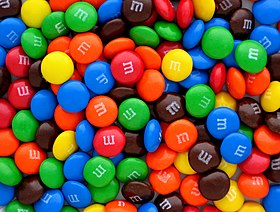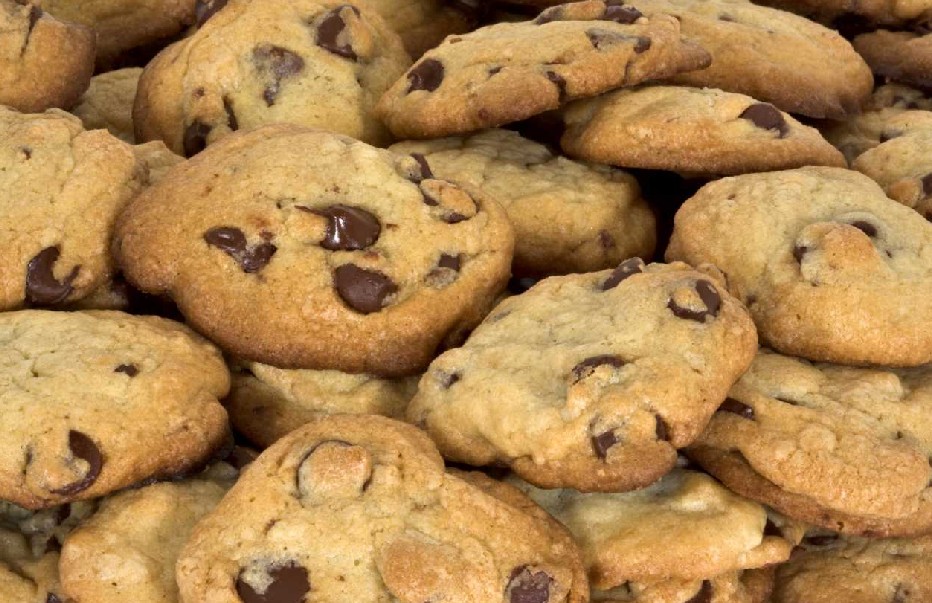- The etymology of the word lasagna is amusing. It starts with the Greek lasanon which means 'chamber pot'! The Romans borrow it as lasanum to humorously refer to a 'cooking pot'. Later, the Italian word lasagne (plural of lasagna) came to refer to a dish cooked in such a pot - flat sheets of pasta layered with minced meat and tomatoes topped with grated cheese. Soon, the word lasagna was applied to the pasta itself.
- There are three theories on the origin of lasagna, two of which denote an ancient Greek dish. The main theory is that lasagna comes from Greek λάγανον (laganon), a flat sheet of pasta dough cut into strips. The word λαγάνα (lagana) is still used in Greek to mean a flat thin type of unleavened bread. The other theory is that the word lasagna comes from the Greek λάσανα (lasana) or λάσανον (lasanon) meaning "trivet or stand for a pot", "chamber pot". The Romans borrowed the word as "lasanum", meaning "cooking pot" in Latin.
The Italians used the word to refer to the dish in which lasagne is
made. Later the name of the food took on the name of the serving dish.
A third theory proposed that the dish is a development of the 14th century English recipe "Loseyn" as described in The Forme of Cury, a cook book in use during the reign of Richard II. This has similarities to modern lasagne in both its recipe, which features a layering of ingredients between pasta sheets, and its name. However, an important difference is the lack of tomatoes, which did not arrive in Europe until after Columbus reached America in 1492. The earliest discussion of the tomato in European literature appeared in an herbal written in 1544 by Pietro Andrea Mattioli while the earliest discovered cookbook with tomato recipes was published in Naples in 1692, though the author had apparently obtained these recipes from Spanish sources.

Friday, March 23, 2012
Trivia # 32 : Lasagna
Friday, March 16, 2012
Trivia # 31 : Ice Cream
- Ice cream is Chinese food.
- In the early days of television mashed potatoes were used to simulate ice cream on cooking shows. Real ice cream melted too fast under the heat from the lighting.
- French Ice Cream is enriched with egg yolks.
- More ice cream is sold on Sunday than any other day of the week.
- It takes about 12 pounds of whole milk to make 1 gallon of ice cream.
- Vanilla is the top Ice Cream flavor in the U.S., followed by chocolate, vanilla/chocolate, fruit and cookies & cream.
- The world's first soft-serve ice cream machine was in an Olympia, Washington Dairy Queen.
- Haagen Dazs ice cream was created in 1959 by Polish born New York businessman Reuben Mattus. The Danish sounding name was also invented by Mattus, and the premium ice cream had a map of Scandinavia on the carton.
- Here is the most popular story on the origin of the ice cream cone:
The ice cream cone was invented at the St. Louis World's Fair in 1904.
An ice cream vendor ran out of paper cups and asked a nearby waffle
booth to make some thin waffles he could roll up to hold the ice cream.
However, it is also reported that a patent had been taken out in the late 1890's for an ice cream cone by Italo Marchiony. So, the ice cream cone was probably popularized at the St. Louis Fair, but not invented there. - 'Neapolitan Ice Cream,' refers to a
block of ice cream composed of layers of different flavors, usually
chocolate, vanilla and strawberry. (The term Neapolitan is also used to
refer to any molded dessert that is made with 3 layers.)
The ice cream makers of Naples were famous in the early 19th century, especially Tortoni, who created many layered ice cream cakes.
Natives of Naples are known as Neapolitans.
The term Neapolitan Ice Cream originated in the U.S. in the late 19th century, and is presumably a reference to the 3 layered ice cream cakes of Tortoni, a Neapolitan. - The origins of ice cream go way back to about 60 A.D. when the Roman emperor Nero ordered ice to be brought from the mountains and combined it with fruit toppings. In the 13th century, Marco Polo learned of the Chinese method of creating ice and milk mixtures and brought it back to Europe. Over time, people created recipes for ices, sherbets, and milk ices. It became a fashionable treat in Italy and France, and once imported to the United States, ice cream was served by George Washington, Thomas Jefferson, and Dolley Madison. Jefferson's favorite flavor was vanilla.
Trivia # 30 : Parsley
- Parsley were hold sacred by Ancient Greeks. They use it not only to adorn victors of athletic contests but also to decorate the tombs of the deceased.
- Parsley is thought to have originated in Sardinia.
- Parsley was used to flavor and garnish food as early as the third century B.C. The name 'parsley' comes from the Greek word petros, meaning 'stone,' because the plant was often found growing among rocks. In ancient times, wreaths were made with parsley and were worn to prevent intoxication. Parsley was brought to the New World by the colonists.
- Parsley seed oil is used in shampoo, soap and men’s perfumes.
Trivia # 29 : Peppers
BELL PEPPERS
- Sweet Bell Peppers contains 3 times more Vitamin C than oranges and twice the iron a spinach has.
- Sweet bell peppers can be orange, yellow, red, purple, brown, black, ivory or green, depending on the stage of ripeness and the variety.
- Green bell peppers are fully developed, but not ripe.
- All sweet bell peppers start out green, and change color as they ripen. (They also get sweeter).
CHILI PEPPERS
- The seeds (of the chili peppers) are NOT the hottest part. It is at the point where the seed is attached to the white membrane inside the pepper that the highest concentration of capsaicin (the compound giving peppers their pungent flavor) is found.
- Pepper is a strong spice often used when cooking bland dishes. This spice gives a pungent flavor to almost any food. Adding a little extra pepper instead of salt to your foods can be both a warming and healthy benefit. Pepper is also said to be helpful to those who have asthma.
Trivia # 28 : Cabbage
- A cabbage is 91% water.
- The Greek poet, Homer (who live around 850 BC), mentions Achilles washing cabbages, in his epic poem the 'Iliad.'
- Cato the Censor (234-149 BC) mentions several medicinal uses for cabbage, including treating infected wounds.
- Those with thyroid problems should avoid eating large amounts of cabbage or cauliflower. They both interfere with the body's absorption of iodine, needed by the thyroid gland.
- The world record for eating cabbage is held by Charles Hardy. He ate 6 pounds 9 ounces in 9 minutes.
Trivia # 27 : Lemons
- Lemons contain more sugar than strawberries.
- Lemons are believed to have originated in Southeast Asia, and spread to Spain and North Africa during the Middle Ages. The cultivated variety is thought to be a hybrid of wild species of lime and citron. Lemon trees bloom throughout the year, and fruit is picked 6 or more times a year, with an average commercial tree yielding about 1,500 lemons per year.
- Third century Romans believed that the lemon was an antidote for all poisons.
- Lemonade was a favorite of the Chinese Emperors. Lemons made their way to the United States with the help of Catholic Missionaries and were planted in Arizona and California.
- There are two different types of lemons — acid and sweet. The most common acid varieties include Eurekas and Lisbons. The acidic type is grown commercially and the sweet types are grown mainly by home gardeners. The trees bloom continuously all year and can produce up to 500 or 600 lemons a year.
- Lemons contain 30 to 45 percent juice depending on variety, climate, maturity when harvested, and storage conditions. The extracted juice contains between 4.5 and 8.5% organic acids (mostly citric).
Trivia # 26 : Tootsie Rolls
Tootsie rolls were named after the daughter of their creator.
The man was Leo Hirshfield. His five year old daughter's nickname was "Tootsie" (her real name was Clara Hirshfield). In creating the Tootsie Roll, Hirshfield was trying to create a chocolate that wouldn't melt easily and eventually came up with the artificial "chocolate" candy, the tootsie roll. This ability to not melt easily and to use artificial ingredients that weren't being rationed during war times proved a huge boon for the company as it eventually began being included in soldier's rations during WWII. The low price of the artificial ingredients also made it a popular treat during the depression, along with the tootsie pop. Today about 64 million tootsie rolls are produced every day along with 20 million tootsie pops.
Trivia # 25 : Snickers
The Snickers candy bar was named after one of the favorite horses of Frank Mars, who created the Snickers candy bar and founded Mars, Inc. The idea for the Snickers bar came from an already existing snack that was made up of nougat, peanut, and caramel. Frank Mars added chocolate, put it in candy form, and started selling it wholesale. The Snickers bar quickly rose to being the world's most popular candy bar and has sustained that to this day. Annual sales of Snickers bar total around two billion dollars with about 15 million Snickers bars produced every day, using about 100 tons of peanuts.
Trivia # 24 : M&M
In 1941, Forrest Mars Sr., of the Mars candy company, struck a deal with Bruce Murrie, son of famed Hershey president William Murrie, to develop a hard shelled candy with chocolate at the center. Mars needed Hershey's chocolate because he anticipated there would be a chocolate shortage resulting from WWII, which turned out to be correct. As such, the deal gave Murrie a 20% stake in the newly developed M&M; this stake was later bought out by Mars when chocolate rationing ended at the end of the war but the name remained M&Ms for "Mars & Murrie".
Trivia # 23 : Cookies
- The word cookie is derived from the Dutch word koeptje ( koekje ), meaning small cake.
- The official state cookie of Massachusetts is the chocolate chip cookie, invented in 1930 at the Toll House Restaurant. (Pennsylvania is also considering the chocolate chip cookie as their official cookie.)
- EEL COOKIES: Unagi Pie, a specialty of Hamamatsu, Japan, are cookies made with fresh butter with crushed eel bones, eel extract, or garlic mixed in.
- The origin of Cookies:
Two issues to deal with here. The word and the food. The food,
originated in Rome sometime around the 3rd century B.C., and it was
called 'bis coctum' meaning twice baked.The Roman 'bis coctum' was not sweet, it had no sugar added. 'Bis coctum' is the origin of the word 'biscuit,' which is a flakey quick bread in
the U.S., but in England a biscuit is what in the U.S. would be called a
cookie or cracker.
Subscribe to:
Posts (Atom)











